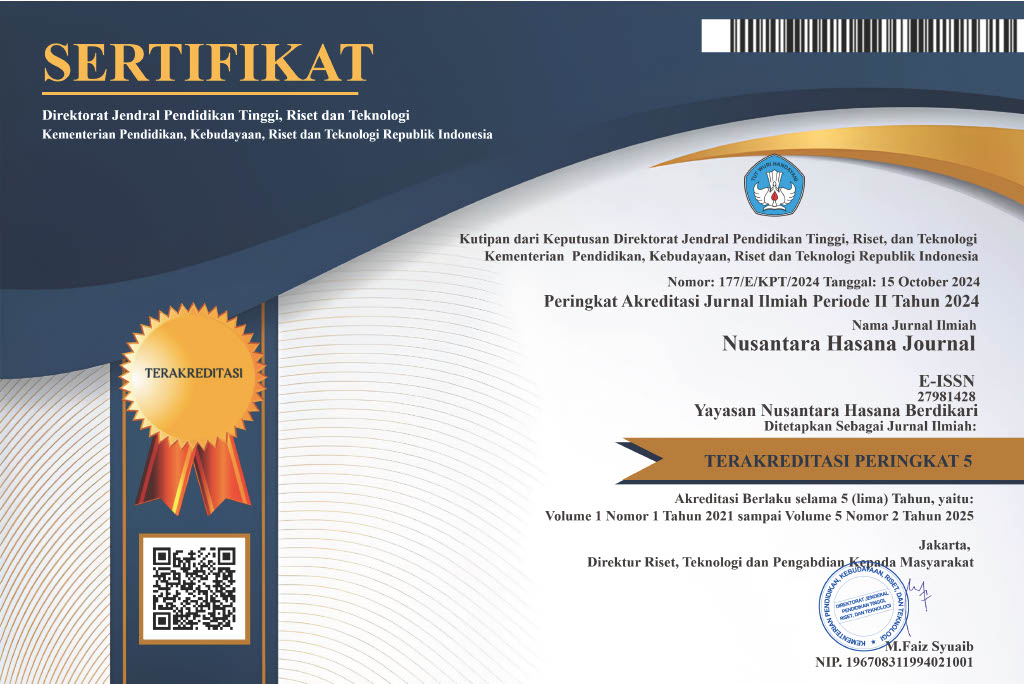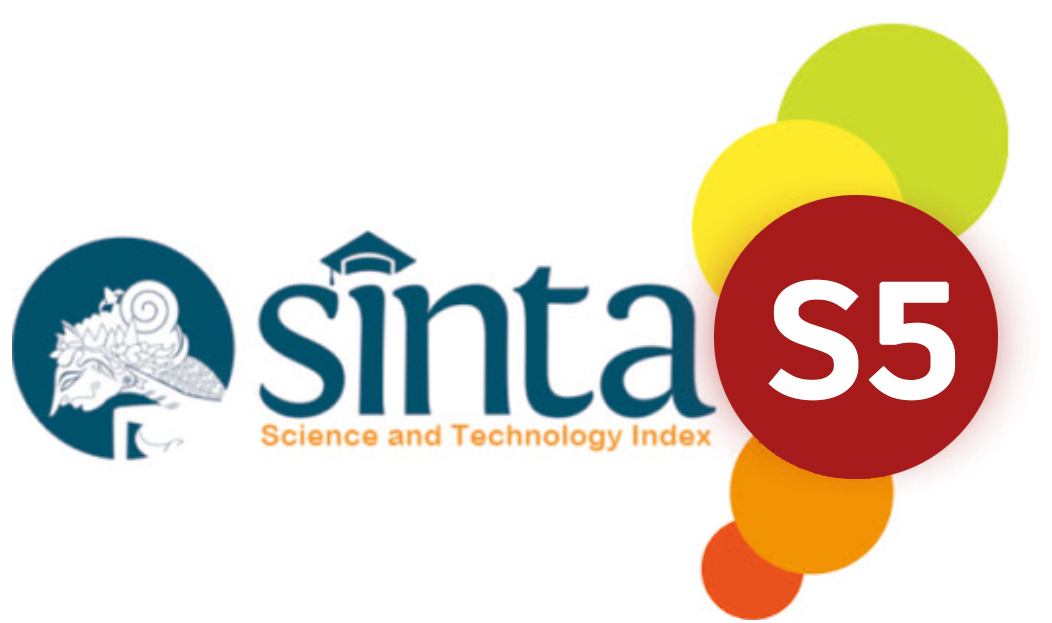PENERAPAN METODE FMEA DALAM MANAJEMEN RISIKO K3 UNTUK MENINGKATKAN PRODUKTIVITAS KERJA: STUDI KASUS DI PT. SURI TANI PEMUKA BANYUWANGI
DOI:
https://doi.org/10.59003/nhj.v4i12.1447Keywords:
OHS, FMEA, Work Productivity, Risk Management, RPNAbstract
Occupational Safety and Health (OHS) is an important aspect in industrial operations, especially in the fisheries sector which has high risks. This study focuses on the application of the Failure Mode and Effect Analysis (FMEA) method to identify and control work risks at PT. Suri Tani Pemuka Banyuwangi, with the aim of increasing work productivity. This study aims to analyze the effectiveness of the FMEA method in identifying risks and increasing work productivity at PT. Suri Tani Pemuka Banyuwangi. The research method used is a descriptive quantitative approach with a single case study design. Data were collected through observation, interviews, questionnaires, and documentation. The analysis was carried out by calculating the Risk Priority Number (RPN) based on the Severity, Occurrence, and Detection parameters to determine the priority of risk control. The results showed that the aerator machine maintenance activity had the highest RPN, which indicated a significant risk. The implementation of control measures such as the Lock-Out/Tag-Out (LOTO) procedure and OHS training succeeded in reducing work incidents by 58% and increasing harvest productivity by 15%. The conclusion of the research on the application of FMEA at PT. Suri Tani Pemuka Banyuwangi is effective in identifying and controlling work risks, as well as increasing productivity. This success is influenced by management commitment and active worker participation. Recommendations to develop a more integrated OHS management system with technology, such as the use of Smart PPE and data-based monitoring systems. Periodic evaluation of the risk control system is also important to ensure its effectiveness. Continuous training for workers and good collaboration between management and workers must continue to be improved to create a safe and productive work environment.Downloads
References
Almaskati, D., Kermanshachi, S., Pamidimukkala, A., Loganathan, K., & Yin, Z. (2024). A review on construction safety: Hazards, mitigation strategies, and impacted sectors. Buildings, 14(2), 526. doi:10.3390/buildings14020526
Baghaei Naeini, S. A., & Badri, A. (2024). Identification and categorization of hazards in the mining industry: A systematic review of the literature. International Review of Applied Sciences and Engineering, 15(1), 1–19. doi:10.1556/1848.2023.00621
Giallanza, A., La Scalia, G., Micale, R., & La Fata, C. M. (2024). Occupational health and safety issues in human-robot collaboration: State of the art and open challenges. Safety Science, 169(106313), 106313. doi:10.1016/j.ssci.2023.106313
Ispas, L., Mironeasa, C., & Silvestri, A. (2023). Risk-based approach in the implementation of integrated management systems: A systematic literature review. Sustainability, 15(13), 10251. doi:10.3390/su151310251
Ivančan, J., Lisjak, D., Pavletić, D., & Kolar, D. (2023). Improvement of failure Mode and Effects Analysis using fuzzy and adaptive neuro-fuzzy inference system. Machines, 11(7), 739. doi:10.3390/machines11070739
Jalil Al-Bayati, A., Rener, A. T., Listello, M. P., & Mohamed, M. (2023). PPE non-compliance among construction workers: An assessment of contributing factors utilizing fuzzy theory. Journal of Safety Research, 85, 242–253. doi:10.1016/j.jsr.2023.02.008
Kineber, A. F., Antwi-Afari, M. F., Elghaish, F., Zamil, A. M. A., Alhusban, M., & Qaralleh, T. J. O. (2023). Benefits of implementing occupational health and safety management systems for the sustainable construction industry: A systematic literature review. Sustainability, 15(17), 12697. doi:10.3390/su151712697
Klaput, P., Hercík, R., Macháček, Z., Noskievičová, D., Dostál, V., & Vykydal, D. (2024). Mutual combination of selected principles and technologies of Industry 4.0 and quality management methods - case study. Quality Engineering, 36(2), 207–226. doi:10.1080/08982112.2023.2193895
Liu, R., Liu, H.-C., Shi, H., & Gu, X. (2023). Occupational health and safety risk assessment: A systematic literature review of models, methods, and applications. Safety Science, 160(106050), 106050. doi:10.1016/j.ssci.2022.106050
Liu, X., Liu, Y., Li, H., & Wen, D. (2023). Identification and analysis of barriers to the effectiveness of ISO 45001 certification in Chinese certified organisations: A DEMATEL-ISM approach. Journal of Cleaner Production, 383(135447), 135447. doi:10.1016/j.jclepro.2022.135447
Mokhtarzadeh, M., Rodríguez-Echeverría, J., Semanjski, I., & Gautama, S. (2025). Hybrid intelligence failure analysis for industry 4.0: a literature review and future prospective. Journal of Intelligent Manufacturing, 36(4), 2309–2334. doi:10.1007/s10845-024-02376-5
Otitolaiye, V. O., & Abd Aziz, F. S. (2024). Bibliometric analysis of safety management system research (2001-2021). Journal of Safety Research, 88, 111–124. doi:10.1016/j.jsr.2023.10.014
Rasouli, S., Alipouri, Y., & Chamanzad, S. (2024). Smart Personal Protective Equipment (PPE) for construction safety: A literature review. Safety Science, 170(106368), 106368. doi:10.1016/j.ssci.2023.106368
Singh, S. P., Mansuri, L. E., Patel, D. A., & Chauhan, S. (2023). Harnessing BIM with risk assessment for generating automated safety schedule and developing application for safety training. Safety Science, 164(106179), 106179. doi:10.1016/j.ssci.2023.106179
Stamatis, D. H. (2003). Failure Mode and Effect Analysis: FMEA from Theory to Execution. ASQ Quality Press
Sunarko, Hari Pranoto, & Mahfud. (2024). Study Of Wooden Pillar Foundation Structure In Stilt Houses On The Coast Of Banyuwangi Beach: Kajian Struktur Pondasi Tiang Kayu Pada Rumah Panggung Di Pesisir Pantai Banyuwangi. Santhet (Jurnal Sejarah Pendidikan Dan Humaniora), 8(2), 2121-2125. https://doi.org/10.36526/santhet.v8i2.4602
Vecchia, M., Sacchi, P., Marvulli, L. N., Ragazzoni, L., Muzzi, A., Polo, L., … Salio, F. (2025). Healthcare application of failure mode and effect analysis (FMEA): Is there room in the infectious disease setting? A scoping review. Healthcare (Basel, Switzerland), 13(1), 82. doi:10.3390/healthcare13010082
Zerguine, H., Healy, G. N., Goode, A. D., Zischke, J., Abbott, A., Gunning, L., & Johnston, V. (2023). Online office ergonomics training programs: A scoping review examining design and user-related outcomes. Safety Science, 158(106000), 106000. doi:10.1016/j.ssci.2022.106000
Zhang, Z., & Lin, K.-Y. (2024). Applying implementation science to evaluate participatory ergonomics program for continuous improvement: A case study in the construction industry. Applied Ergonomics, 115(104181), 104181. doi:10.1016/j.apergo.2023.104181
Downloads
Published
How to Cite
Issue
Section
License
Copyright (c) 2025 Slamet Hariyadi

This work is licensed under a Creative Commons Attribution-NonCommercial-ShareAlike 4.0 International License.
NHJ is licensed under a Creative Commons Attribution-NonCommercial-ShareAlike 4.0 International License.
Articles in this journal are Open Access articles published under the Creative Commons CC BY-NC-SA License This license permits use, distribution and reproduction in any medium for non-commercial purposes only, provided the original work and source is properly cited.
Any derivative of the original must be distributed under the same license as the original.
























